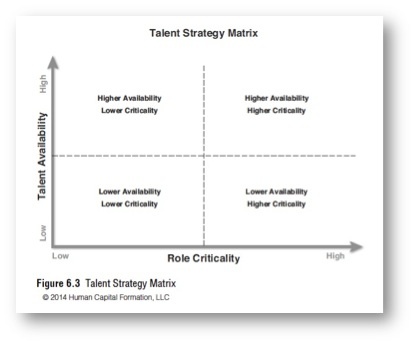Recruiting leaders constantly need to justify talent acquisition and additional investments in their team, tools, and technology. At the same time, they face increasing demands from hiring managers to handle their requisitions quicker and better than other openings in the organization — regardless of their relative importance to the goals of the business.
3 Pivotal Factors For Recruiters
- Hiring managers, across the board, believe their vacancies are the most important to fill.
- Talent acquisition resources are limited; therefore it is impossible to fill every job with the same effort — regardless of the size of the organization.
- Given these two things above, it is tremendously difficult to achieve the right balance of efficiency and effectiveness in talent acquisition.
Desired Output of a Talent Acquisition Leader
The higher ground in talent acquisition is reached through the understanding of relative criticality of jobs to the value they contribute, and the availability of talent for these jobs in the marketplace. This understanding provides a rational basis for organizing and deploying recruiting resources in order to balance workload and achieve critical results.
Hiring strategy based on these criteria is a winning formula. Why is it so? Because it takes into account the best interests of the business. It is a valid framework for making talent acquisition investment choices, and determining performance targets for the talent acquisition effort.
In our book, Talent Valuation (Pearson Press, 2015), Tom McGuire and I use the matrix shown here to plot data points for criticality and availability.

The Position of role on this matrix indicates what methods will be most appropriate to achieve the desired talent results, including build, buy, and borrow decisions. This article focuses on the impact to recruiting (“buy”) decisions only. For example, lower criticality and higher availability might mean that well-written and carefully-placed job postings, coupled with robust screening questions through the applicant tracking system, will drive the talent you need. On the other hand, higher criticality and lower availability likely indicates the need for research and sourcing capability and executive-search level recruiter skills.
This construct will also assist in making investment decisions. The dynamic of lower criticality and higher availability will often indicate efficiency investments as being attractive, depending on the circumstances. Efficiency investments like this allow the existing resources — the team, technology, etc. — to be used more effectively. The Return on Investment equation is:
ROI = Net Savings divided by Cost of Investment
Efficiencies are not just about cutting costs. Dedicating resources differently to increase their productivity can also generate significant efficiencies.
For example
Consider this example: The recruiting department invites professional candidates to in-person interviews three times on average before making an offer. Many candidates travel from out of town to interview, and the average interview travel cost is $999. The recruiting department piloted two virtual interviews. With one in-person interview yields substantially the same hiring outcome from all stakeholders’ perspectives. Currently, there are 1,000 interviews per year. The department has selected a virtual interviewing technology that has a license fee plus per usage cost totaling $257,000 annually at that volume of hiring. A $150,000 technology investment is required to enable this change. This is a nice return on an efficiency investment as follows:
ROI = $409,000* divided by $150,000 = 273%






















